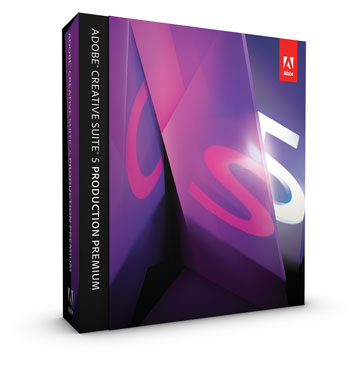

September 20, 2010
Behind the Scenes of Adobe CS5
Overview, Installations, Graphic Cards and Ram.
http://www.adobe.com
www.nvidia.com
www.crucial.com
By Steve Douglas
Not every new version of software that comes to market makes as big a splash as a company might expect from the public. We certainly saw that with Final Cut Studio 3 which many preferred to refer to as Final Cut 2.5.
OVERVIEW
We've seen the same happen with past versions of Adobe software as well........But not this time!!
Adobe CS 5 brings to the table a standard that requires others to play catch up. By now it is no secret that the key to this very significant jump is Adobe's new 64 bit Mercury engine. While not all of the Adobe applications have been re-written as 64 bit the ones most used, Premiere Pro, After Effects, Photoshop Extended and Media Encoder are those that really harness the power and benefits of this suite. What Adobe's CS5 does provide overall is greater confidence and speed for creating and delivering content across the board .
In truth, this was sufficiently compelling as the catalyst for me to get a new computer with the CPU horsepower and more RAM to take advantage of what CS5 now offers. The 64 bit architecture enables us to install as much usable ram as we can afford. Most important is that one is aware that there are only a handful of currently compatible NVIDIA graphics cards produced for the new Adobe Mercury engine. This led to working with CS5 in 3 different Mac Pros and my old Mac Book Pro. The first Mac Pro was a 3GHz dual-core with 5.5 gigs of ram. This Mac Pro had an identifier number of 1.1 that was incompatible with any of the new NVIDIA cards and therefore could not take advantage of the GPU-acceleration in the 64-bit Mercury Engine. The older Mac Pro's can still take advantage of the Mercury Playback Engine, as they are 64-bit, and can handle multicore processors. However, the newer cards are not compatible with the older Mac Pros. Never the less, though not able to utilize the Mercury engine, CS5 still ran just fine. This was then followed by installing the NVIDIA FX4800 card and CS5 in a new 2 x 2.26 GHz Quad-Core Mac Pro with a meager 6 gigs ram.
It is a general rule of thumb that one should have at least 1 gig of ram for each core, however, with the Adobe Mercury engine, as much ram as you can afford to install will be taken advantage of with the end results not being a disappointment. Finally, I reinstalled the NVIDIA card and CS5 in a new 2 x 2.66 GHz 12 core Mac Pro supplied with 20 gigs ram.
With the introduction of CS3 and CS4 Adobe has strived diligently to integrate their suite packages more tightly. With each version more gains were attained but with CS5 it is my view that they have finally and truly succeeded with their vision of what they wanted Adobe to be. With CS5's Production Premium, a production script can be written in Adobe's new 'Story' application. This new application is a collaborative tool which enables you to link characters, locations, scene descriptions, and dialogue to production and post-production workflows, opening the door to faster overall project completion. In Adobe Story script information is automatically transformed into metadata that is used to create an initial shot list in Adobe's CS5 OnLocation. Adobe's CS5 OnLocation will be used on the set to further log, calibrate, monitor and capture footage directly to disk and supplement information from your script that's added automatically with the metadata you may add manually. With OnLocation, in addition to automatically generating shot lists, these lists can also be sorted by location, time of day, or character to ensure that you get complete coverage as you shoot. If you are editing in Premiere Pro, metadata from Adobe Story and OnLocation can quickly create rough cuts and thus speed up your workflow. You can import media directly from Adobe's OnLocation into Premiere Pro including any in or out points you have set when logging as well as using the embedded dialogue from your shots to align with your script. This gets you from script to screen more quickly. This shot list can then also be utilized when editing in Adobe's Premiere Pro. When used as a collaborative tool with both OnLocation and Premiere Pro, Adobe's Story helps you start your project in a more organized way from beginning to end. The release of Adobe's Story also signifies additional scriptwriting solutions to include CS Live, Acrobat.com and other web based centers. These hosted sites and Adobe Story allow you to share your work with clients, producers, and anyone involved in the development process permitting quick review, testing and feedback. For the first 12 months after the purchase of CS5 you have free access to Story and other CS Live tools after which they will be available as an optional paid subscription service. Certainly, a year's free access is more than enough time to evaluate it as an asset than one might need.
Premiere Pro has been available for many years but this is their year to stand out with truly significant performance increases as a result of the speed improvement generated by its new Mercury Playback Engine which is native 64 bit, CPU optimized, memory addressed and, with a qualified NVIDIA graphics card, GPU-accelerated. Also, these new cards are only compatible with computer identifier numbers of 3.1, 4.1 or higher. If you have one of the older Mac Pros with an identifier number of 1.1, you're out of luck. (Go to System Profiler to find out what your identifier is.) Premiere Pro can now access considerably more RAM than in prior versions and can process larger numbers just as fast. The new multicore optimization equates with Premiere Pro taking full advantage of all cores in the multicore CPUs so that it splits the processor threads for an even and balanced distribution. The GPU acceleration uses both OpenGL technology for display playback and, couples with NVIDIA's CUDA accelerated filters and effects for chromakeying, color correction and considerably more. According to NVIDIA, the gains made by moving core visual processing in the Mercury Playback Engine to CUDA enabled Adobe to create a more efficient GPU-accelerated functioning with up to 70 times the performance.
Premiere Pro will launch the newest version of Adobe Media Encoder when you choose to export your sequence to a fully deliverable file. Adobe Media Encoder is a full featured encoder capable of compressing to a significant number of formats for the internet, BluRay and standard DVDs so that now you have the flexibility to produce content in MPEG-2, H.264, QT, WM, Flash and native support for DSLR cameras as well without the need to transcode or rewrapping your DSLR footage. The Mercury engine really plays a part in this due to the rendering and encoding from Premiere Pro and takes full advantage of the GPU acceleration where possible. With a CUDA enabled card from NVIDIA the acceleration is much faster than with one sans this architecture.
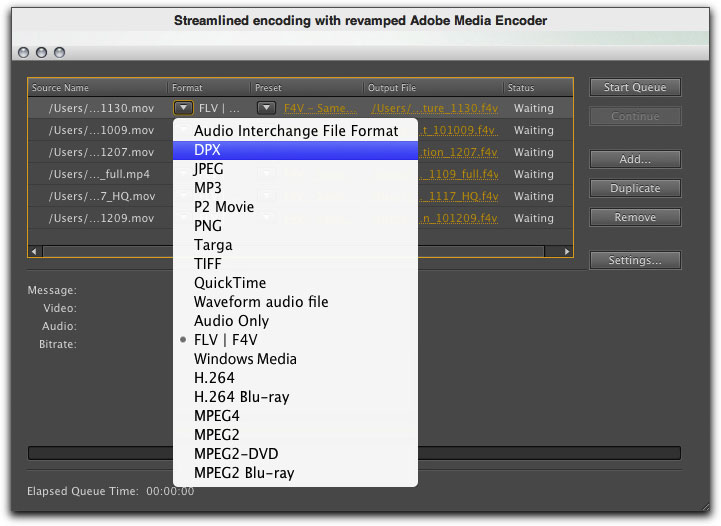
With enough RAM the Mercury engine will provide processor intensive tasks, such as using highly encoded formats, with real time performance even when using multi-layered effects, color corrections and other graphics.
While there was previous support from Premiere Pro for P2, AVCHD, XD Cam EX and HD, Adobe CS5 Premiere Pro will now natively support AVCCAM, DPX, AVCHD, XDCAM HD50, AVCCAM as well as formats from the mushrooming collection of DSLRs and improved support for AVC-Intra as well as increased support for Red R3D. You can also now import and export Avid and Final Cut Pro projects using XMP and AAF data.
The bare minimum and general rule of thumb is to have at least one gig of ram for each core.
Very important to understand is that just because you may have many cores, in my case, 12, doesn't mean that you want to set your preferences to use all cores during the processing. This depends to a significant degree upon the amount of Ram you have installed. Too many CPUs but not enough ram will starve the CPUs and slow things down. Think of being underwater and trying to suck air out of a thin straw rather than a proper snorkel.
It is better to lower the number of CPUs being accessed so that each CPU has more ram to access. Case in point, on my 2.66 GHz Mac Pro 12 core, I have 20 gigs of ram which is plenty, but certainly not as much as the 32 gigs the computer can hold. Unless one of you out there have the extra dollars to send me more ram I will be staying with the 20gigs I now have. Therefore, despite the fact that I have 12 cores, in the After Effects Memory and Multiprocessing preferences I limited the number of actual CPUs that will be used to 7. This provides each of these 7 CPUs with a bit more than 2 gigs ram each.
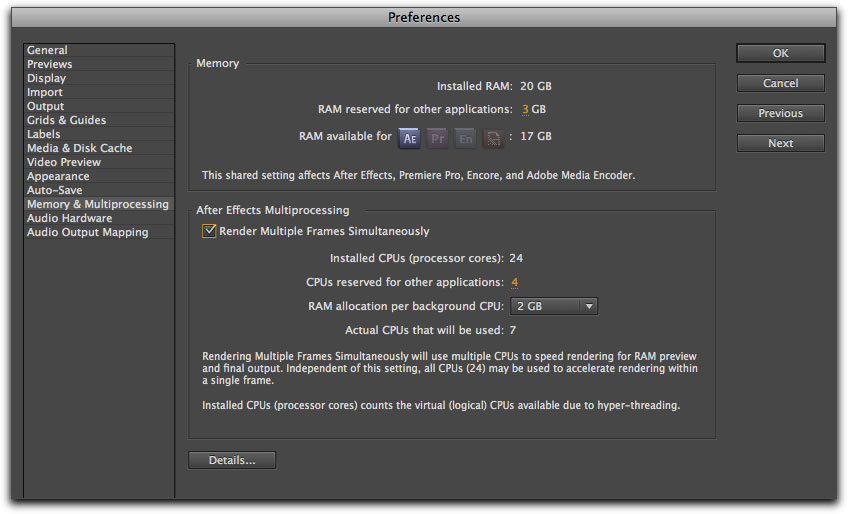
Despite the number of cores I now have, not wanting to starve the CPUs, l limit the number of cores accessed to seven.
Don't forget that you will also need some ram available for running other applications while you are working with a CS5 app.
I was particularly excited when I heard of CS5's new features, especially so when using Adobe After Effects. Because After Effects is also native 64-bit, users can take full advantage of available ram and processor cores allowing faster rendering, longer ram previews of complex and deeply layered composites and an easier time when working with 32 bit color. Full support is supplied for those using AVC-Intra or footage from the Red cameras. and, significant performance gains even with full HD, 2K and 4K projects.
There are many new features in After Effects including a new auto-keyframe mode which allows you to automatically animate keyframes and the highly anticipated new Roto-Brush Tool. The Roto Brush is designed to help you quickly and easily isolate foreground and background elements much quicker than when we did these things frame by frame.
INSTALLATION OF CS5
Installation can be completed by the consumer as either a download from the Adobe website or by purchasing the discs themselves.
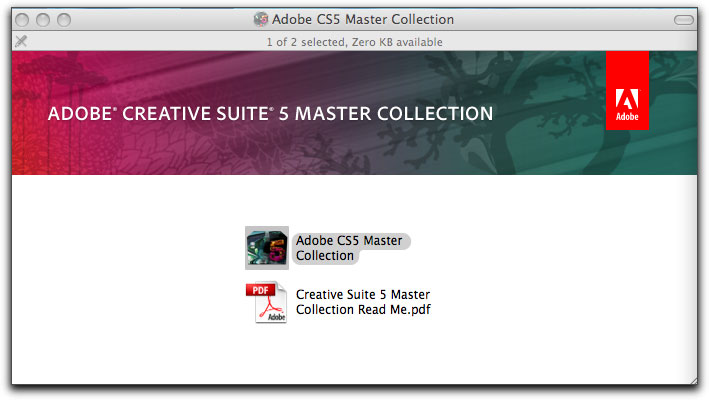
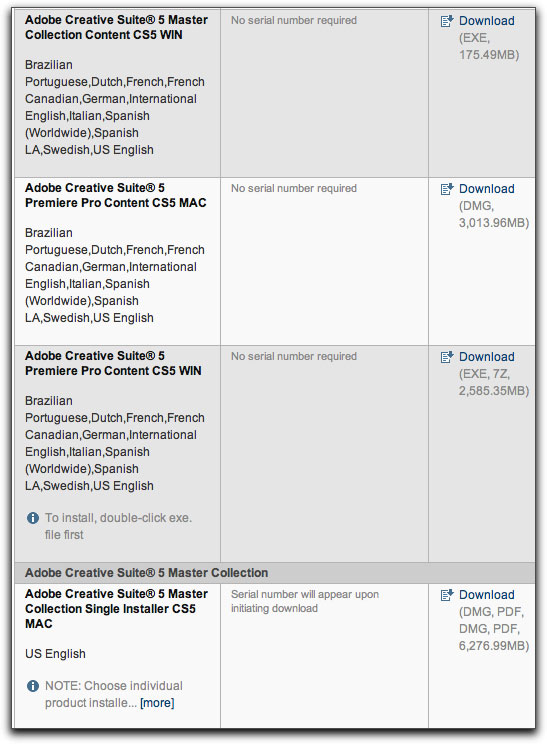
From the Adobe website you can download either individual applications or one of their many application collections.
In the past installations of the Adobe Suites was a time consuming chore fraught with install bugs and other problems. Whatever bugs they had must have been exterminated with CS5 as the entire install went by much more quickly and without problems.
Previous versions of the Adobe suites can exist together on the same hard drive. Installing the new CS 5 suite will not step on previous versions. There are several 3rd party plug ins whose companies have not yet updated their software to work with CS5 applications and if that software is important to your workflow than do not delete that application necessary to work with your 3rd party effects For example, I make use of one plug in which works just fine in CS4 After Effects but has not been updated to work in CS5. The solution, for now, is to have both AE CS4 and 5 in my applications folder. I can always delete the older version when the plug in is updated.
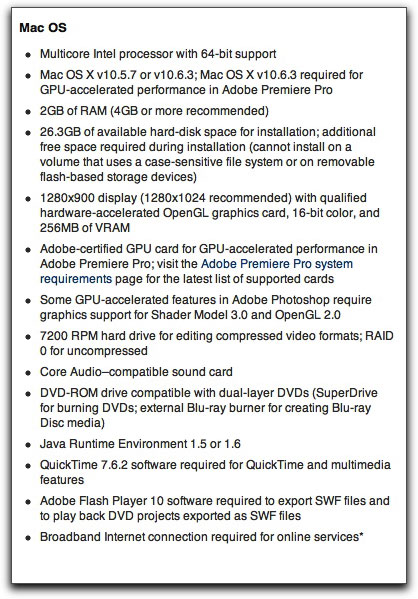
Requirements for full assess to the 64 bit Adobe CS 5 features.
The installation process is the same whether by disc or by download. My installation was done by downloading from the Adobe site. You choose the destination, which should be your boot drive and applications folder.
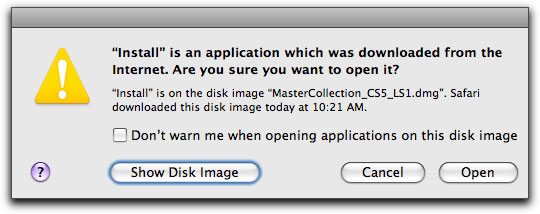
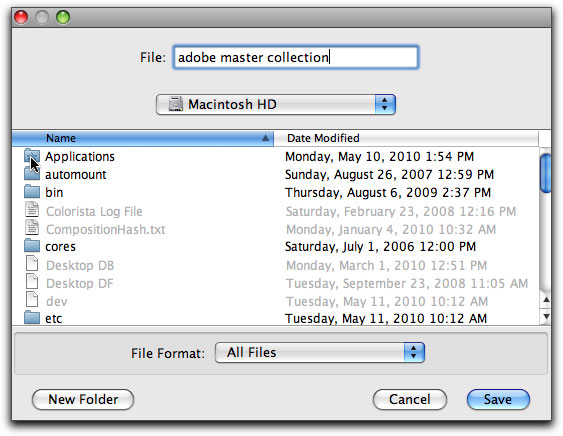
First you type in your serial number whether from disc or download. This is really the same procedure you follow with most every software install.
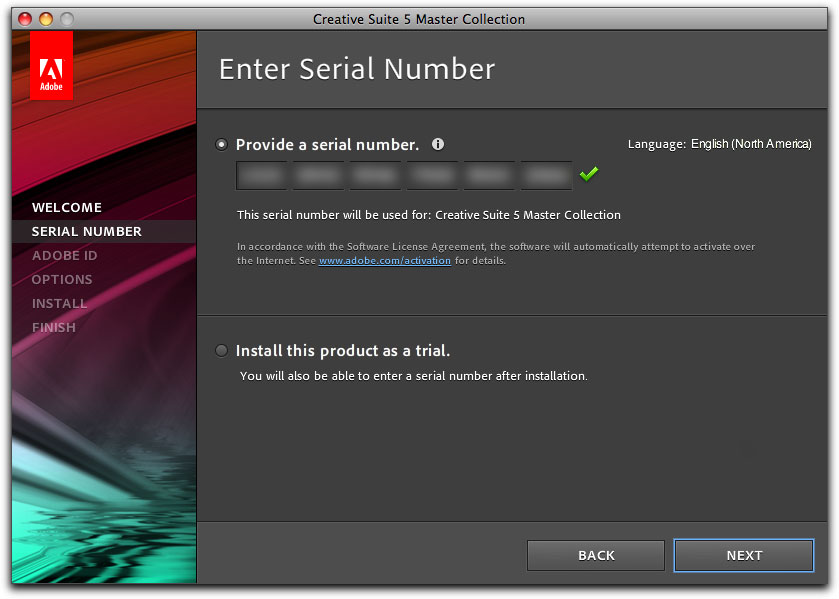
When installing and after your serial number is submitted you create an Adobe ID with a password which registers your software. This allows you to be notified of impending updates which can be downloaded on line, and to be kept aware of new services, surveys, events or other offers.
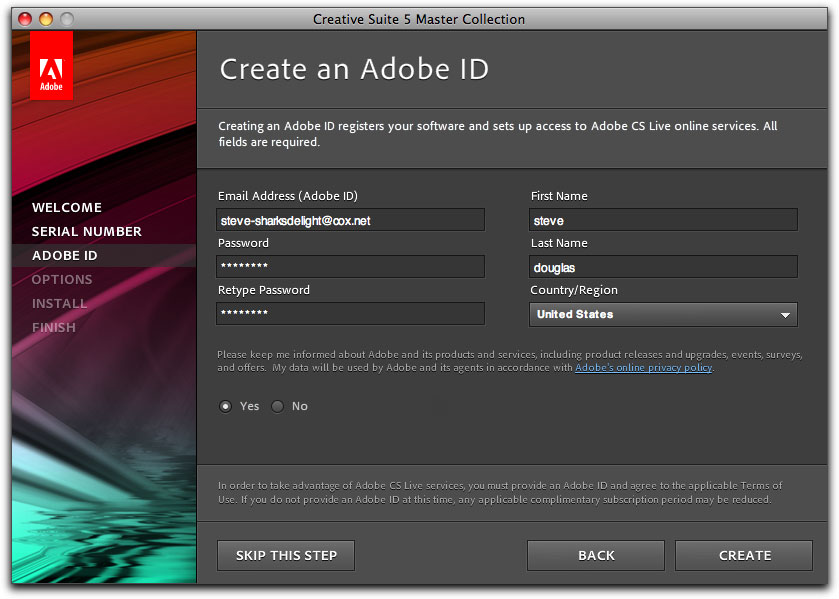
The next step is really the biggest one, it is here that a menu comes up with all the applications listed in whichever suite you purchased. The reason for choices rather than an automatic install of everything is that you may want, for example, all the applications on your desktop computer but only a few on your laptop. I'm sure there may be even better reasons but to have a choice is simply the best option.
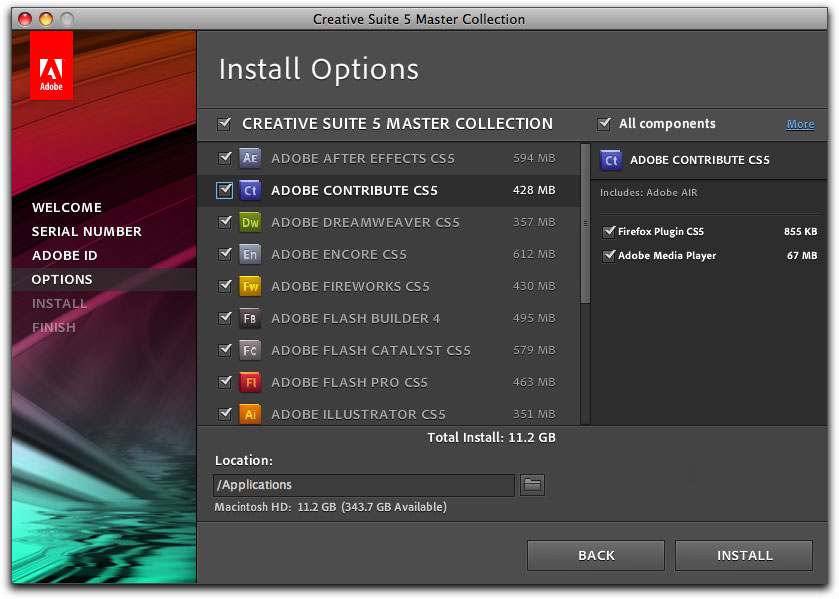
You need only check the application that you want and all the associated plug-in, file and folders quickly install themselves.
I failed to exactly time how long it took for the install to complete itself. However, I remember how exceptionally long CS4 took and this install appeared to go much more rapidly. The entire install took less than an hour. Wow, that was pleasant!
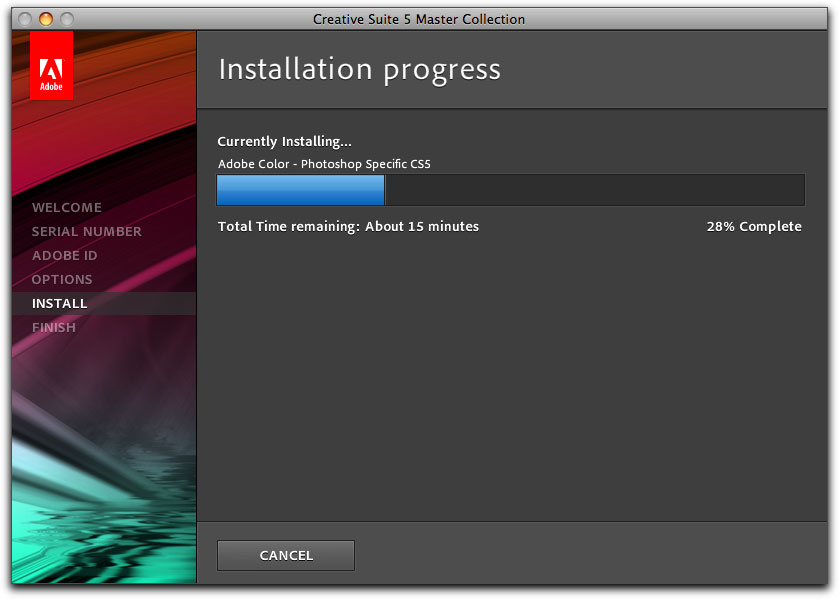
Check the progress bar and the percentage left and you will see for yourself that Adobe has made waiting for the installation of CS5 much less painful.
GRAPHICS CARDS
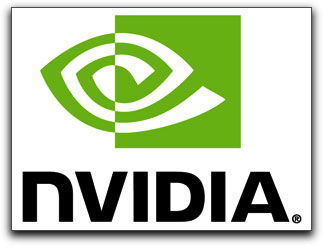
Currently, NVIDIA Quadro graphics cards certified by Adobe are:
- Quadro CX (Windows
- Quadro FX 3800 (Windows)
- Quadro FX 4800 (Mac and Windows)
- Quadro FX 5800 (Windows)
- Quadro 4000 (Windows)
- Quadro 5000 (Windows)
- GeForce GTX 285 (Mac and Windows)
- GeForce GTX 470 (Windows)
Any of these cards will add the processing power of their parallel GPU cores to your CPU to improve your timeline preview capabilities inside Premiere Pro CS5.
Anyone using any other graphics card will be able to use Adobe CS5 but will only be able to use the unaccelerated software version of the playback engine. This certainly proved to be the case when initially installed in my 3 year old dual core Mac Pro as well as when working with my current Mac Book Pro. All ran well but without the accelerated speed later installations would display.
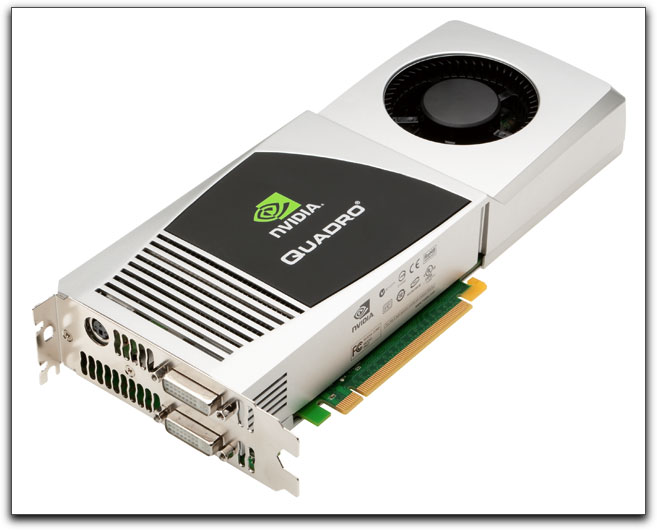
As was previously noted, though Adobe CS5 will run on any Intel Mac, in order to take full advantage of its 64bit Mercury engine, a graphics card designed to be compatible with the new Mercury engine is needed. This card is designed for any Mac Pro with an identifier of 3.1, 4.1 or higher. I chose the NVIDIA Quadro FX 4800 for Macs as it is designed for super fast performance and yet will not break the bank or your wallet. The Quadro FX 4800 for Mac supplies 192 processing cores, 1.5 GBs of ram and adds 50% more memory bandwidth than the Quadro FX3800 graphics card. With the FX 4800 users can take advantage of all the new features in CS5 and utilize all the ram that you can install. Using 2nd generation NVIDIA unified GPU architecture and the 192 CUDA parallel processing cores, the NVIDIA card will deliver greatly increased speed and performance. The playback engine can use the GPU cores on the NVIDIA Quadro FX 4800 to process the effects on your clips allowing the CPU in my Mac to focus on video decoding and improved responsiveness.
When coupled together the NVIDIA Quadro and Adobe Premiere Pro CS5 and other of the editing applications in the Adobe collections can provide a tightly knit, thoroughly integrated and time saving combination when creating multi-layered video projects, and playing them back in real time. The Mercury Playback engine utilizes CUDA to speed almost all areas of the playback workflow is the power behind the acceleration of roughly 30 effects and transitions, color space conversions, video compositing, opacity, motion, blend modes and video deinterlacing. Add all the filters, scaling effects, mattes, color correction and compositing modes you want and you will still be able to view in real time without having to render either previews or having to reduce working playback resolution. In Premiere Pro, previews could all be done in real time without the need to render.
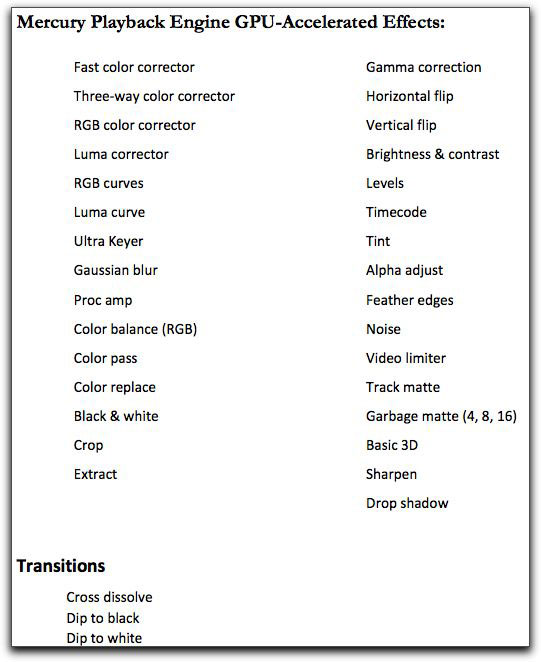
Video processing functions which are able to take advantage of the high speed memory interface between the video DRAM and the GPU benefit from the 100 GB/sec transfer rate, which allows multiple effects to be processed in parallel before being passed back to the playback engine. The high performance CUDA architecture allows for the video data to be stored with 32-bit floating point precision, which means visual data retains high levels of precision throughout the rendering and playback process.
Installation of the NVIDIA Quadro FX4800 card went smoothly. I powered down the computer, disconnected it from the power outlet and opened the chassis. The existing graphics card was pulled out and the FX4800 inserted into a x16 PCI-express slot where a screw was used to secure the card's bracket to the system chassis. The FX4800 card does require a single 6-pin auxiliary power connection and you connect your monitor to one of the 2 Display Ports or one of the two Dual-Link DVI connectors of the graphics card. My friend is handier with tiny screws and such so I let him do it for me. I've said it before, I tap myself on the back when I can connect the chain to the toilet bowl float so I have no shame in admitting to letting him do it. However, inserting the card in both the 8 core and the 12 core Mac Pros did go quickly and without any issues. NVIDIA takes care of things even further by making sure consumers are kept aware of any new firmware updates by its own CUDA link found in the system preferences on your computer. Clicking on the CUDA icon in your system preferences will bring up a check for updates window. I love it when a company is proactive regarding consumer needs. This way you are never left guessing down the road as to just which update version you have. In addition, NVIDIA graphics card support is updated on a regular basis. Users can check: www.adobe.com/go/64bit for more information.
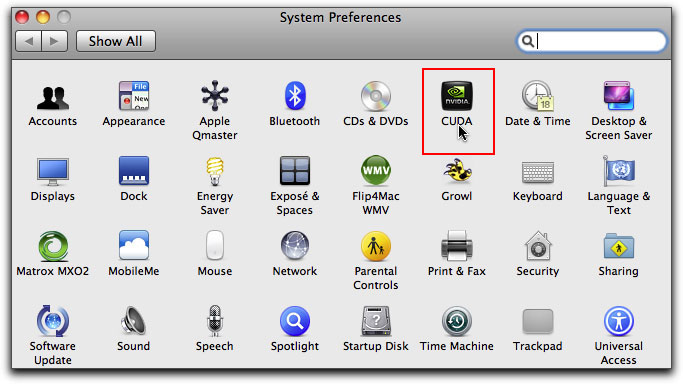
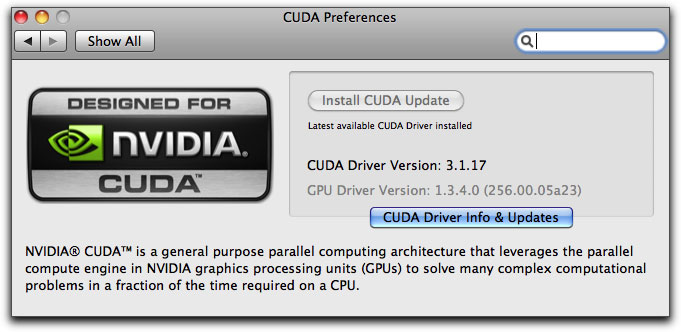
Found in System Preferences highlighting the CUDA icon will let you know whether an update is needed or not even when you have forgotten yourself which version you last installed.
RAM

For those who might be new to this field, RAM is an integral part of any computer. It stands for Random-access memory and is a form of computer data storage. To simplify its purpose, it basically takes the form of integrated circuits that allow for storage of data in any particular/random order. While there are many different types of RAM with different access times, the goal of all ram is to use a memory hierarchy to obtain the highest possible average access performance while minimizing the total cost of the entire memory system (generally, the memory hierarchy follows the access time with the fast CPU registers at the top and the slow hard drive at the bottom). If a computer becomes low on ram, as when using multiple applications at the same time, computer processing speed will slow down. This can be particularly noticeable when rendering graphics and playing back composited previews. Therefore, the more ram the better and faster your system should run.
Since RAM is an important part of any computing system there is the mis-assumption by many that RAM is RAM no matter who manufactures it. That couldn't be further from the truth, and especially since the NVIDIA FX 4800 graphics card coupled with Adobe's CS5 can access all the RAM your computer will fit, it is best to maximize your system's potential.
All RAM is not built the same! I have been to computer stores that offered RAM at extremely low prices where the salesman, hoping to make a sale, would then add that it was guaranteed for life. But let's be realistic, a lifetime warranty is fine but if the RAM goes bad think of the inconvenience of having lost hours or perhaps weeks of work in the form of lost files, and then having to go into your computer and pull out the RAM (that's assuming your are experienced enough to figure out that it is bad RAM in the first place, and feel comfortable installing RAM chips yourself in the computer) It is a much better idea to use the best quality RAM you can afford and to keep in mind that less expensive ram is often not only not as dependable but can be slower as well. For my last three computers there was only one choice in my mind, and that was to purchase RAM from Crucial. I have never had RAM from Crucial go bad on me and they are less expensive than buying RAM directly from Apple. I'm not saying that there aren't other good manufacturers of dependable ram. I am saying that I have used Crucial Ram for many years now without a single issue. Now some may say that I should knock on wood at this point because as soon as an editor brags about never having a hard drive crash on them, that's usually when it happens, or, as an underwater filmmaker, I recall telling a group that I was leading in Tahiti that I had never had a camcorder housing flood on me. Two hours later I had a flood and a very expensive doorstop. Never-the-less, I am not the least bit concerned about the RAM I installed from Crucial. I know this sounds like a bunch of hyperbole but its not, the quality of Crucial's RAM is every bit as dependable as I say it is.
Not sure which RAM is right for your specific computer? They have an extremely helpful tool on their website called
'The Crucial System Scanner'. It's free and it downloads quickly, scans your system and then brings you to the exact page with the correct RAM choices for your desktop computer or laptop.
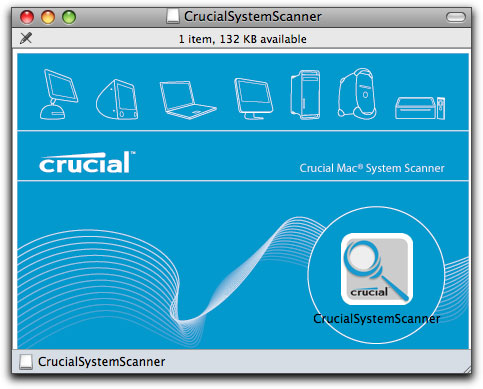
Crucial's System Scanner only took a couple of seconds to download and use.
Click on it and it evaluates your entire computer's system and provides choices of ram compatible with your specific system.ul.
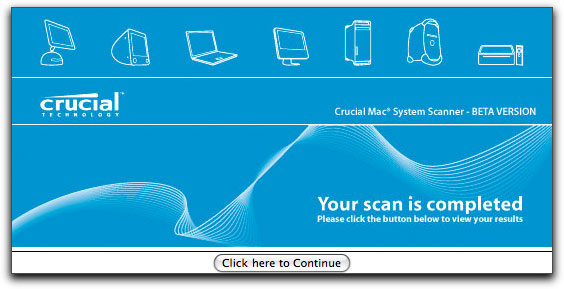
The scanning took a very short time. It then directs you to your RAM options.
If downloading the System Scanner is not for you then you can use Crucial's Memory Advisor on their website to find it for you that way. It's a 3 step method for this, and very easy to do. Step one is to use the drop-down menu to identify the brand of your computer, two is to identify, in the case of Apple computers, whether I am looking for RAM for one of the various laptops or desktop computers and the third step is to identify the specific model of computer you want new RAM for, in this case, a Mac Pro 12 core.

Just follow the steps. Quick and easy for anyone.
If you absolutely feel as if you need to talk to someone at Crucial you can click on the 'Chat Live' button. I've used it a couple of times just to get some information and never had to wait more than a minute before an advisor came on and texted me, allowed me to type in my questions and then receive answers quickly. During these text conversations, I did not feel rushed by the advisor and if they weren't absolutely sure of something they would type in something along the lines that they were checking my inquiry and they'd quickly get back to me with the information I needed. I was asking so many questions, Margaret, the advisor helping me, had the patience of a saint but knew her stuff and provided me with all the information I requested.

Click on this
|
|
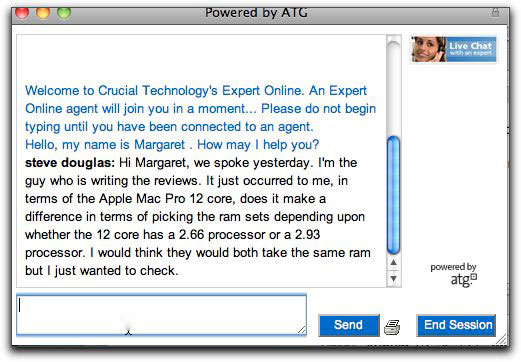
and you get to talk/text with a real person.
|
If you already know and are confident of your system you can, of course, manually do a RAM search. Below, I found the RAM options for my MacBook Pro with Adobe CS5 installed.
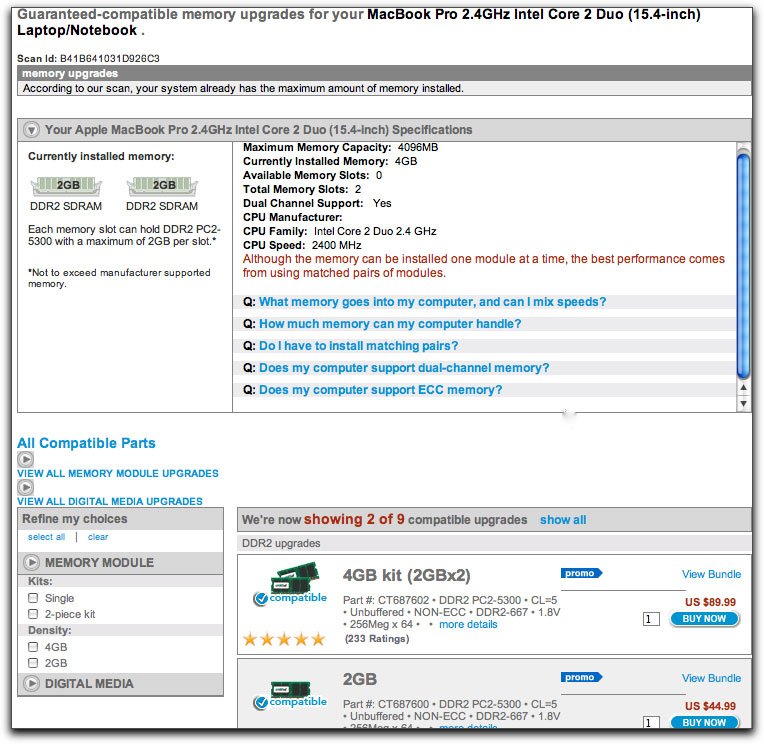
Clicking on any of the questions in blue will bring up a drop down answer for you should you not be sure of something regarding your specific model of computer.
If you have read this far in this rather lengthy article you will have noticed that there really haven't been any criticisms or suggestions for future versions though I am sure there will be new updates with improvements and new features I may have not even thought about as yet. Adobe CS5 has been, for the most part, rebuilt from the ground up and they have thoroughly succeeded in introducing a very stable 64bit set of applications. There is no question in my mind that having the proper hardware access all that the new CS5 offers is vital. CS 5 will run just fine without it but the accelerated speed will not be there for you. On my 2 year old 2.4GHz Core 2 Duo Mac Book Pro, CS5 was stable as could be but without being able to utilize the Mercury Engine and with the original graphics card, I found that After Effects was as slow to preview and render as it always had been.
The question for many will be whether if their computers are getting a bit long in the whiskers, whether buying a compatible computer would be worth the expense in order to access Adobe CS5's new Mercury engine with its vastly increased speed and production features. If you already have a computer that is compatible than this is a no brainer. Purchasing an update from previous Adobe versions is totally worth it. If you have that old computer that may at this time be incompatible or nearing its retirement age, than knowing that Adobe CS 5 is out there may well be the catalyst for that new purchase.

Steve Douglas is a certified Apple Pro for Final Cut Pro 7 and underwater videographer. A winner of the 1999 Pacific Coast Underwater Film Competition, 2003 IVIE competition, 2004 Los Angeles Underwater Photographic competition, and the prestigious 2005 International Beneath the Sea Film Competition, where he also won the Stan Waterman Award for Excellence in Underwater Videography and 'Diver of the Year', Steve was a safety diver on the feature film "The Deep Blue Sea", contributed footage to the Seaworld Park's Atlantis production, and productions for National Geographic and the History channels. Steve was a feature writer for Asian Diver Magazine and is one of the founding organizers of the San Diego UnderSea Film Exhibition. He is available for both private and group seminars for Final Cut Pro and leads underwater filming expeditions and African safaris with upcoming excursions to the Cocos Islands, Costa Rica, Lembeh Straits, Indonesia, and Wakatobi. Feel free to contact him if you are interested in joining Steve on any of these exciting trips. www.worldfilmsandtravel.com
[Top]
copyright © www.kenstone.net 2010
© 2000 -2010 Ken Stone. All rights reserved. Apple, the Apple logo, Final
Cut Pro, Macintosh and Power Mac
are either registered trademarks or trademarks of Apple. Other
company and product names may be trademarks of their respective
owners.
All screen captures, images, and textual references are the property and trademark of their creators/owners/publishers.



























